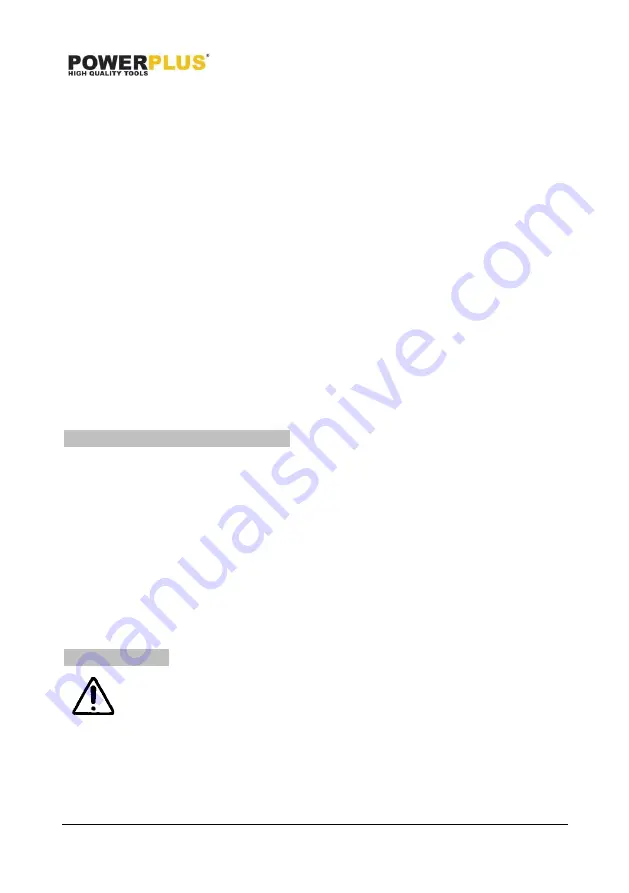
POWX3018
EN
Copyright © 2022 VARO
P a g e
|
4
www.varo.com
5.4
Power tool use and care
▪
Do not expect the power tool to do more than it can. Use the correct power tool for what
you want to do. A power tool will achieve better results and be safer if used in the context
for which it was designed.
▪
Do not use the power tool if the switch cannot turn it on and off. A power tool with a broken
switch is dangerous and must be repaired.
▪
Disconnect the plug from the power source before making adjustments, changing
accessories, or storing power tools. Such preventive safety measures reduce the risk of
starting the power tool accidentally.
▪
Store power tools, when not in use, out of the reach of children and do not allow people
who are not familiar with the power tool or these instructions to operate it. Power tools are
potentially dangerous in the hands of untrained users.
▪
Maintain power tools. Check for misalignment or jammed moving parts, breakages or any
other feature that might affect the operation of the power tool. If it is damaged, the power
tool must be repaired. Many accidents are caused by using poorly maintained power tools.
▪
Keep cutting tools sharp and clean. Properly maintained cutting tools with sharp cutting
edges are less likely to jam and are easier to control.
▪
Use the power tool, accessories and cutting tools, etc., in accordance with these
instructions and in the manner intended for the particular type of power tool, taking into
account the working conditions and the work which needs to be done. Using a power tool
in ways for which it was not intended can lead to potentially hazardous situations.
5.5
Service
▪
Your power tool should be serviced by a qualified specialist using only standard spare
parts. This will ensure that it meets the required safety standards.
6 ADDITIONAL SAFETY HINTS
▪
Do not vacuum any sharp-edged, hot or incandescent materials.
▪
The appliance should not be exposed to heat. For use with cold ashes only (
≤40 °C)!
▪
Do not vacuum any moist or liquid substances. Never immerse the appliance in water.
▪
Unplug the appliance form the mains supply socket after use and before every cleaning.
Pull the plug, not the mains cable, in order to disconnect the appliance from the mains.
▪
Do not put any object into openings. Do not use with any opening blocked. Keep free of
dust, lint, hair etc.
▪
Do not use the vacuum cleaner without dust container or dust filter in place.
▪
Do not vacuum any flour, cement etc., in order to avoid the overloads.
▪
The appliance should only be cleaned with a dry or damp cloth; it should never be
immersed in water. Do not use any solvents for cleaning.
▪
This appliance is intended for domestic use only and not for commercial applications.
▪
Do not use the mains wire to carry the appliance. Do not pull the mains wire over sharp
edges.
7 ASSEMBLY
Attention! Check if the power plug is disconnected from the mains.
▪
Unfasten the lock tabs ‘(2) on the vacuum container (1).
▪
Lift the cover (4) off.
▪
Check if the filter (10) is assembled well.
▪
Place the cover back over the container and fasten with the lock tabs.
▪
Connect the aluminium nozzle (8) with the suction hose (7) to the suction hole (9) at the
container.
▪
Connect the ash vacuum cleaner to the mains and switch on.























